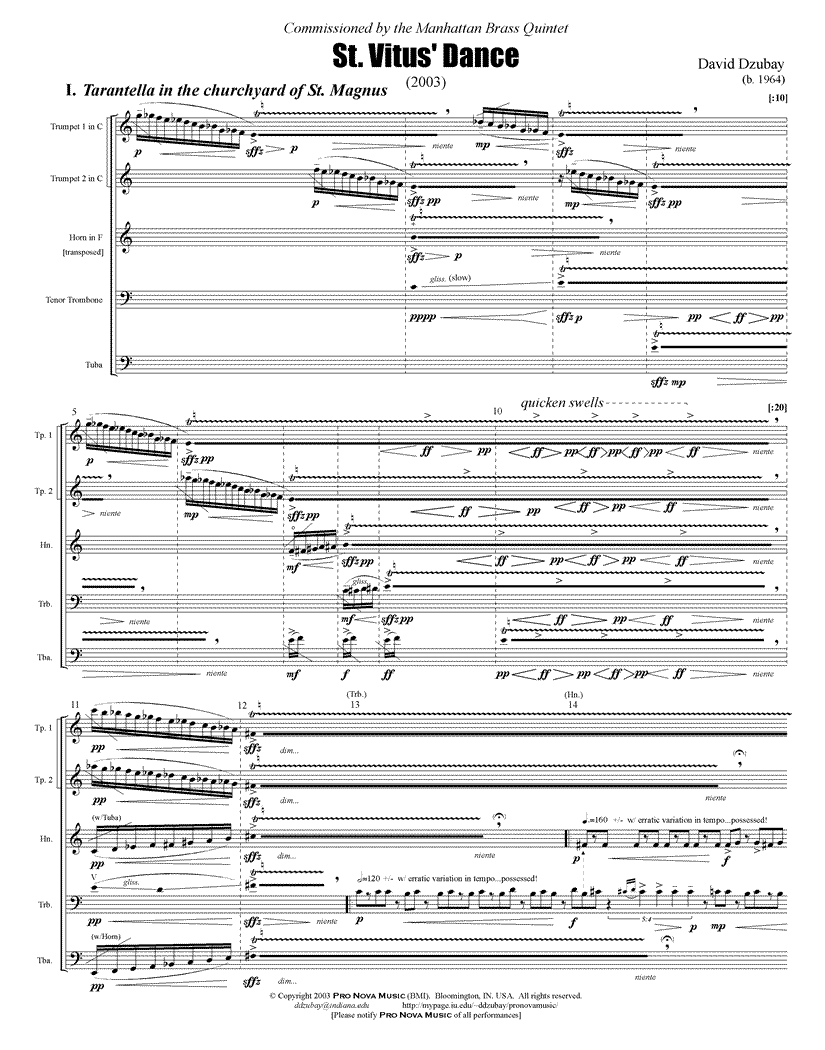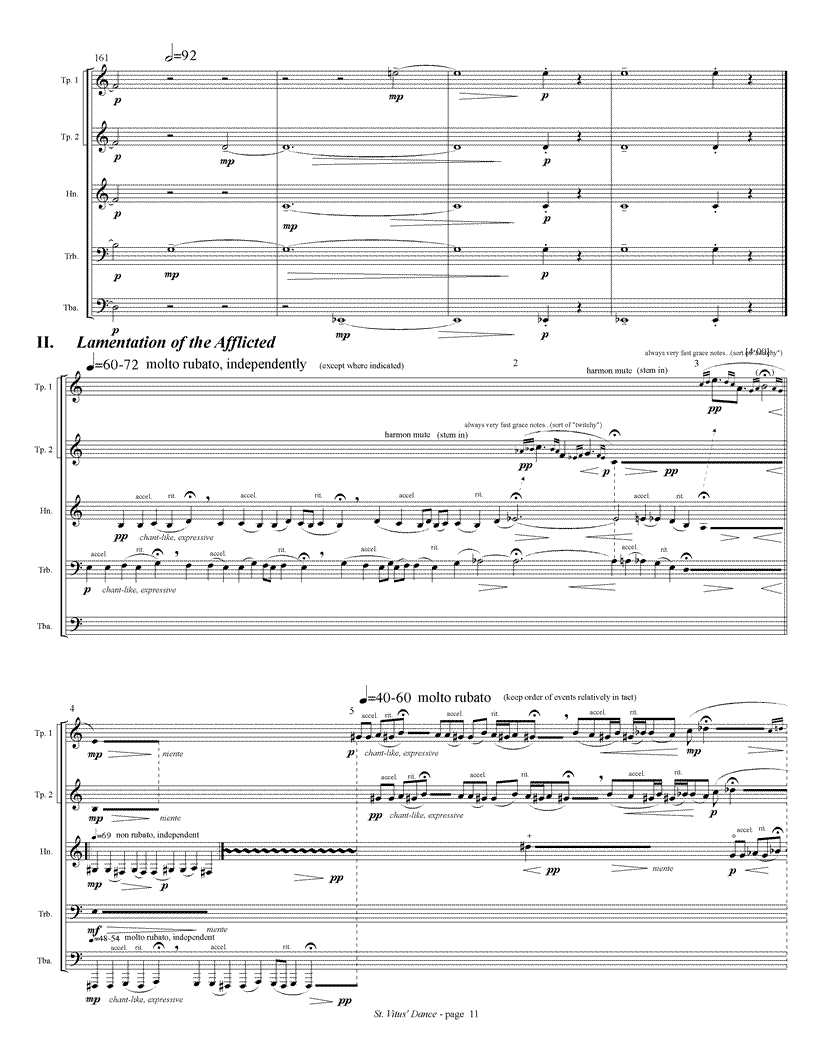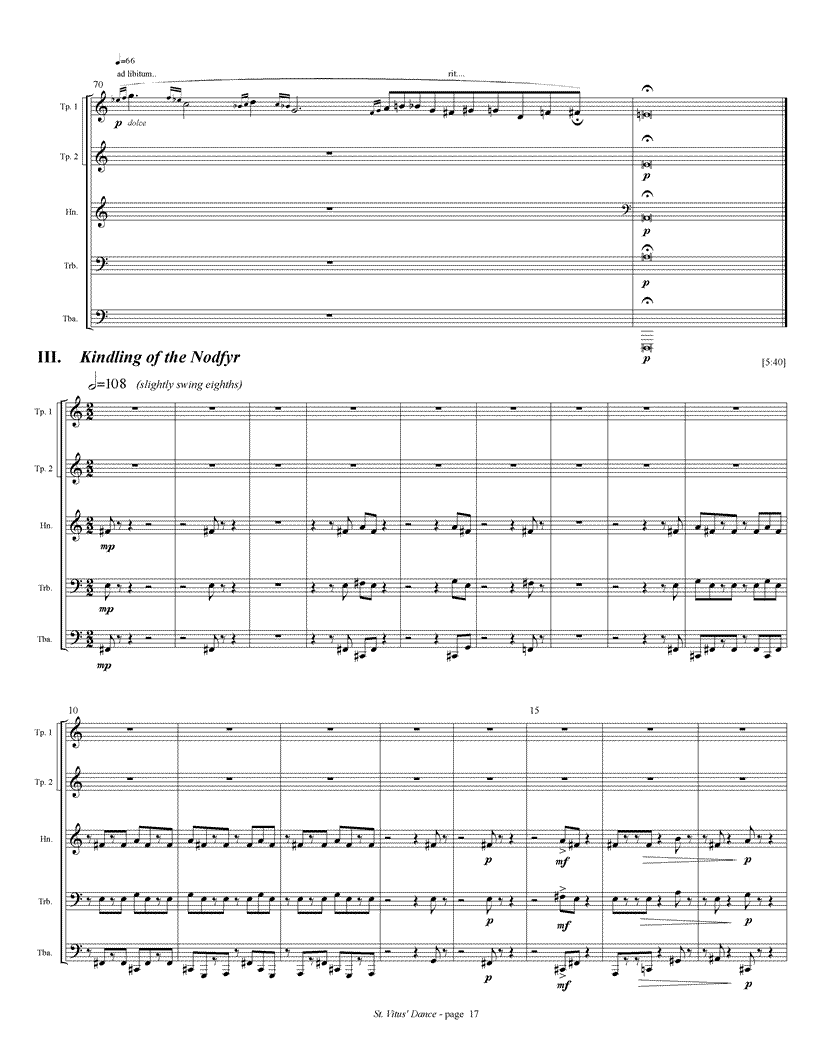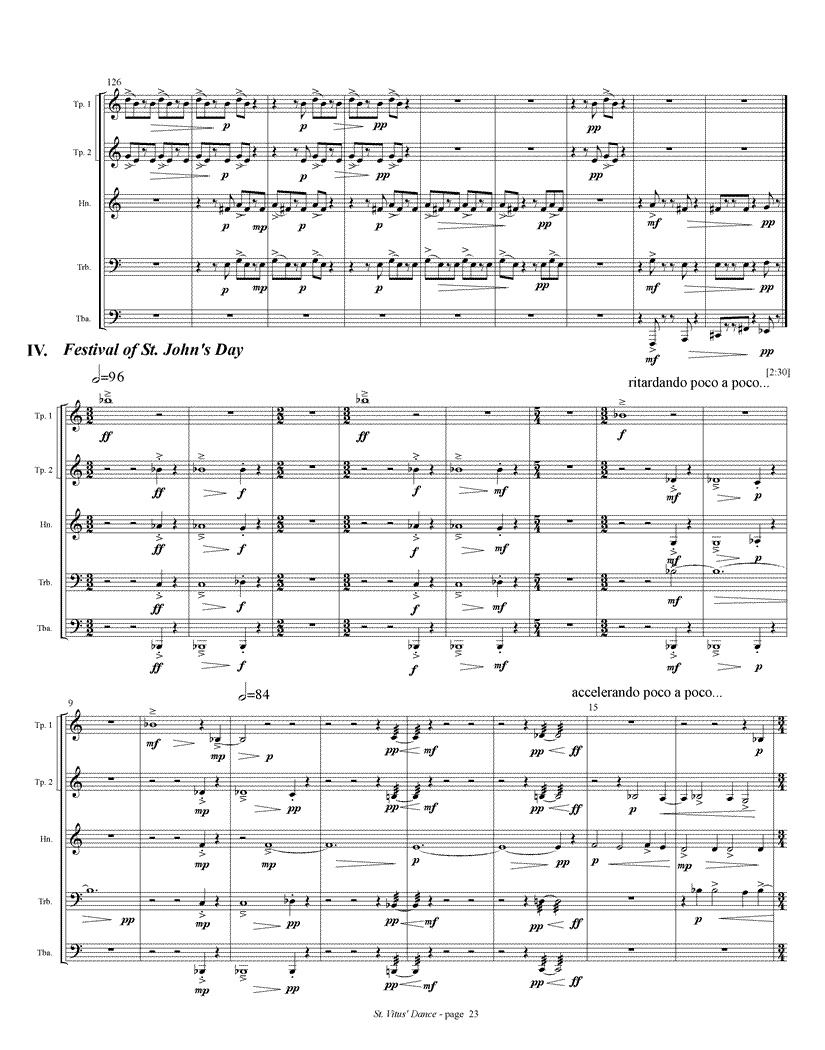St. Vitus' Dance
(2003) for brass quintet
- Tarantella in the churchyard of St. Magnus [4:00]
- Lamentation of the Afflicted [5:40]
- Kindling of the Nodfyr [2:30]
- Festival of St. John's Day [4:00]
duration: 17 minutes
I
II
III
IV
Perusal Score
Recording
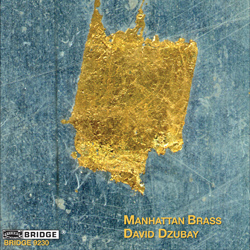 Bridge 9230 Manhattan Brass - David Dzubay
Bridge 9230 Manhattan Brass - David Dzubay
Wayne du Maine, Lew Soloff, Ann Ellsworth, Michael Seltzer, David Taylor
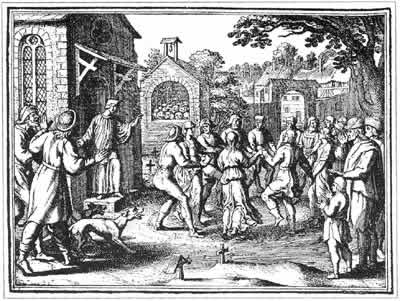
Commissioned by the Manhattan Brass
This piece was made possible by a grant from the Meet the Composer
Program Note
"Young people of Saxony were dancing in the churchyard of St. Magnus. There were fifteen youths and four maidens and they danced so much and sang so loudly that they disturbed the priest, who was saying mass. He left the chapel and came out to them, asking them to desist; but, heedless of his injunction, they continued their sport. The priest then prayed to God and to St. Magnus to make them dance for a whole year as a punishment." (Nuremburg Chronicles, 1493)
Setting out to compose a group of dances for the Manhattan Brass Quintet, I became intrigued with the idea of exploring the history of the medieval dancing manias that raged in Europe between the eleventh and seventeenth centuries. In 1278 a crowd of people danced so raucously on a bridge above the Maas River in Germany that it collapsed, killing many participants. Survivors were apparently restored to full health in a nearby chapel dedicated to St. Vitus. Thus referred to as St. Vitus' Dance, these dance manias were sometimes ascribed to chorea, a central nervous system disorder characterized by brief irregular jerking movements resembling dancing. This is reflected in the twitchy, heavily syncopated main theme of this quintet.
An Italian variation of the dancing mania, known as tarantism, was supposedly caused by the bite of a tarantula spider. The only cure was thought to be frenetic dancing of a tarantella, causing the "poison" to dissipate from the victim's blood. Recreating the scene in the churchyard of St. Magnus, the first movement of the quintet transports the Italian tarantella, complete with the opening spider "bites," to Saxony, with the disturbed priest represented by interruptions of increasingly insistent, sonorous, repeated chords.
The second movement transforms the syncopated theme into a chant-like melody presented in rather free canon in this slow, expressive lament. The twitchy dancing continues, however, in the quick ornamentation of some of the counterpoint. After an anguished, faster middle section, the movement reaches a state of calm leading back to a chant reprise.
The third movement presents propulsive yet light bouncy music that rarely seems to touch ground. This is meant to evoke the "Kindling of the Nodfyr," a ritual associated with the dancing manias, involving participants leaping through smoke or flames with the belief this would protect them from disease over the coming year.
The "Nodfyr" ritual, performed at the summer solstice, was incorporated into the festival of St. John's Day as early as the fourth century, resulting in a half-heathen, half-Christian festival. The last movement includes variations of the priest's music, a short pious chant and some music reminiscent of the famous 12th century Notre Dame choirmaster, Perotin. These sacred elements are contrasted with a profane, raucous dance. A central feature of the medieval dance frenzy was participants leaping or jumping continuously for up to several hours through what they claimed were invisible fires, until collapsing in exhaustion, as do the players in the brass quintet at the end of this work, following five last spider bites!
St. Vitus' Dance is dedicated to the members of the Manhattan Brass Quintet, who commissioned the work, and who have performed my other music for brass quintet so well and so frequently over the years.


